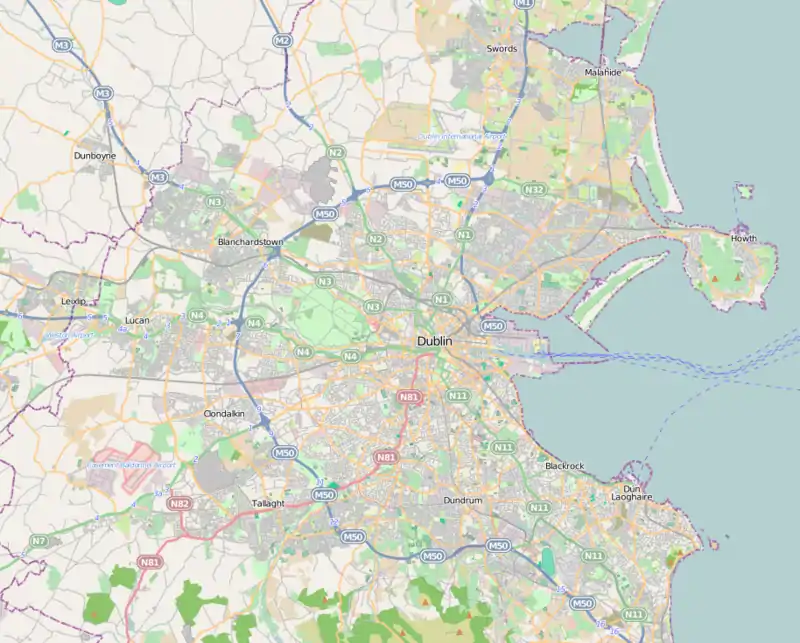Sheriff Street
Sheriff Street (Irish: Sráid an tSirriam), known by locals as "Sheriffer" or "The Street", is a street in the north inner city of Dublin, Ireland, lying between East Wall and North Wall and often considered to be part of the North Wall area. It is divided into Sheriff Street Lower (west end) and Sheriff Street Upper (east end).
 Sheriff Street Lifting Bridge | |
 | |
| Native name | Sráid an tSirriam (Irish) |
|---|---|
| Namesake | Sheriffs in general |
| Length | 1.2 km (0.7 mi) |
| Width | 12 metres (39 ft) |
| Location | Dublin, Ireland |
| Postal code | D01 |
| Coordinates | 53.350569°N 6.240527°W |
| west end | Commons Street |
| east end | East Wall Road |
History

It is one of a group of streets named after civic offices and concepts: Mayor Street, Guild Street, Harbourmaster Place and Commons Street are all nearby.
The Sheriff Street area might be defined as Upper and Lower Sheriff Street, Mayor Street, Guild Street, Commons Street, Oriel Street, Seville Place, Crinan Strand and Mariner's Port. Sheriff Street had a reputation as a run-down area with a high crime rate.[1] Issues with poverty and crime peaked during the heroin epidemic of the 1980s and 1990s. In the late 1990s, the Sheriff Street flats (St Laurence's Mansions, St Bridget's Gardens and Phil Shanahan House) were demolished and this area became quieter. Although the area has been redeveloped it still remains a mainly working class area.
Traditionally, work on the docks provided employment for local men, but the arrival of containerization led to mass unemployment in the late 1980s.[1]
Notable people
Luke Kelly of the band The Dubliners was born in Lattimore Cottages, 1 Sheriff Street, 400 metres (a quarter of a mile) from Dublin's main thoroughfare, O'Connell Street. His place of birth has since been demolished. Stephen Gately of Boyzone was also from the area.
References
- 'You keep your mouth shut and your head down', Rosín Ingle, The Irish Times, 24 July 2010
External links
- – In 1973, RTÉ Radio 1 producer, Seán Mac Réamoinn set out to capture life in the North Wall/Sheriff Street area of Dublin city in a radio documentary, Inner City Island, looking to the past, present and future, which aired on RTÉ Radio 1 on 17 March 2009 and is online as a podcast.[1]